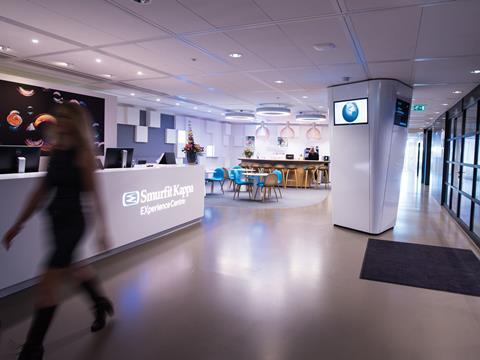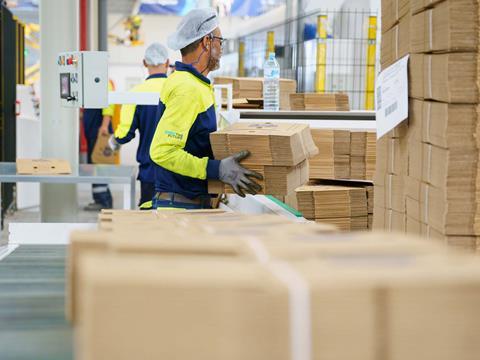
In recent years, alongside traditional performance metrics, businesses have started to insist on the incorporation of sustainability targets into commercial contracts. In the latest edition of our ‘In Conversation With…’ feature, Patrick Sweeney, Smurfit Kappa’s VP of Pan-European Sales & Multi-National Accounts, explores the current landscape of this concept – plus some best practice methods and strategies for getting it right.
To start with, please could you introduce the concept of building sustainability targets into commercial contracts?
Traditionally, commercial contracts have been built on pricing structure, payment terms and factors such as increased efficiencies. And while sustainability performance has always been part of what we deliver for customers, we are now seeing an increased appetite for sustainability targets to be built into the actual contract itself.
Why are companies asking for sustainability targets to be incorporated into contracts?
The challenge of achieving the Paris Agreement and the UN 2030 SDGs requires genuine and measurable action now. In recent years, we have seen many of our multinational customers creating more ambitious targets than what has been set out by law.
Almost all of them have put a ‘net zero by X’ flag in the ground and want tangible milestones along the journey to achieving their goals and, in many cases, acceleration of what they have committed to by 2030. With vastly differing baselines and data capture at play, however, it can take time to navigate and align priorities.
In your view, how is Smurfit Kappa advancing companies’ net zero journeys?
We support companies in two ways:
1. The first happens organically by way of our own stringent SBTi assured targets and the ongoing investments we are making into our operations which indirectly feed into, and have a positive impact on, their emissions.
2. We also take a forensic look across their supply chain to identify where we can reduce their emissions like, for example changing board grade or replacing plastic with paper.

When companies choose to partner with Smurfit Kappa, they are automatically benefiting from our scale and industry-leading performance. Furthermore, we have been measuring and recording our sustainability performance since 2005 and demonstrating significant progress against our targets.
Smurfit Kappa frequently works on large scale projects with key brand owners - could you give an example of how this is working in practice?
We’re working with some global brands to make commitments that, as their packaging provider, we will help them to hit certain sustainability targets, for example a year-on-year reduction in emissions.
We also respond to changes they make, like for example reducing the size of their product in projects such as launching a more concentrated detergent which needs a smaller bottle and, in turn, less packaging. This, however, isn’t a change that can be made as easily by food brands.
There have been consumer backlashes against smaller packs in the past due to the perception that consumers are getting less for their money (even if the amount of food inside the smaller pack remains the same). No one wants to lose business for doing the right thing.
What are some best practices that organisations should be aware of when coming up with targets like this?
Collaboration is key here. We often see companies pledging to be net zero without looking at how they’re going to get there or understanding the impact of their activities. This is why there needs to be engagement as early as possible with all the relevant stakeholders (c-suite, sustainability, innovation) to avoid committing to something which their suppliers cannot deliver on.
As their packaging provider, we obviously play an important role in our customers’ Scope 3 emissions. We are already a considerable distance down this road and are on the cusp of releasing our 17th annual Sustainable Development Report which gives a detailed and transparent update on how we are investing in our plants through renewable energy initiatives, such as biomass boilers and solar panels, and what we are doing to advance our customers’ sustainability targets.

What does the future hold for the implementation of sustainability goals into commercial contracts – how do you expect this field to evolve?
It’s likely to become commonplace amongst the big brands. As we draw closer to 2030 and beyond customers are under more pressure to demonstrate to shareholders and consumers what they are actually doing to drive down their emissions. This increases the accountability of all suppliers. We are also expecting to see more long-term contracts to align with the milestones that are built into our customers’ sustainability roadmaps.
There is also likely to be more Power Purchase Agreements (PPAs) coming into play between renewable energy providers and corporate brands. As these are usually long term, it makes sense to sign longer commercial contracts so they can run in tandem.
For our own climate change strategy, we are committed to at least net zero by 2050 and have set interim targets on reducing our Scope 1 and 2 CO2 emissions per produced tonne of paper by 55% by 2030 from our paper mills. While there is a lot that is new and emerging for us all (at Smurfit Kappa we’re currently testing both hydrogen and geothermal energy) it helps if people talk to each other at the start and build a plan and strategy together.


















No comments yet